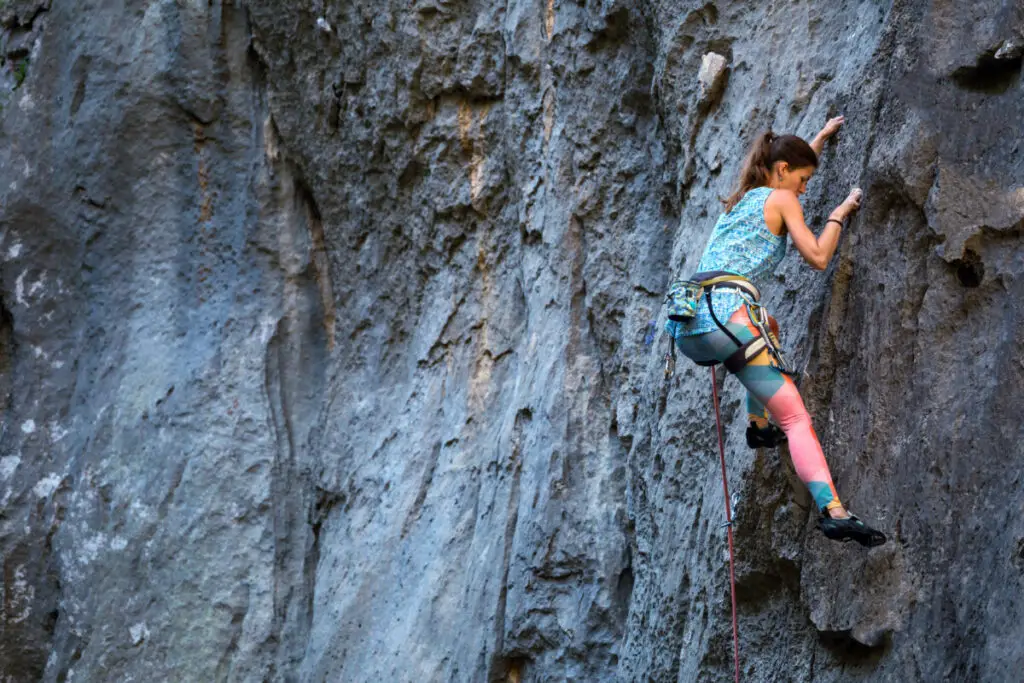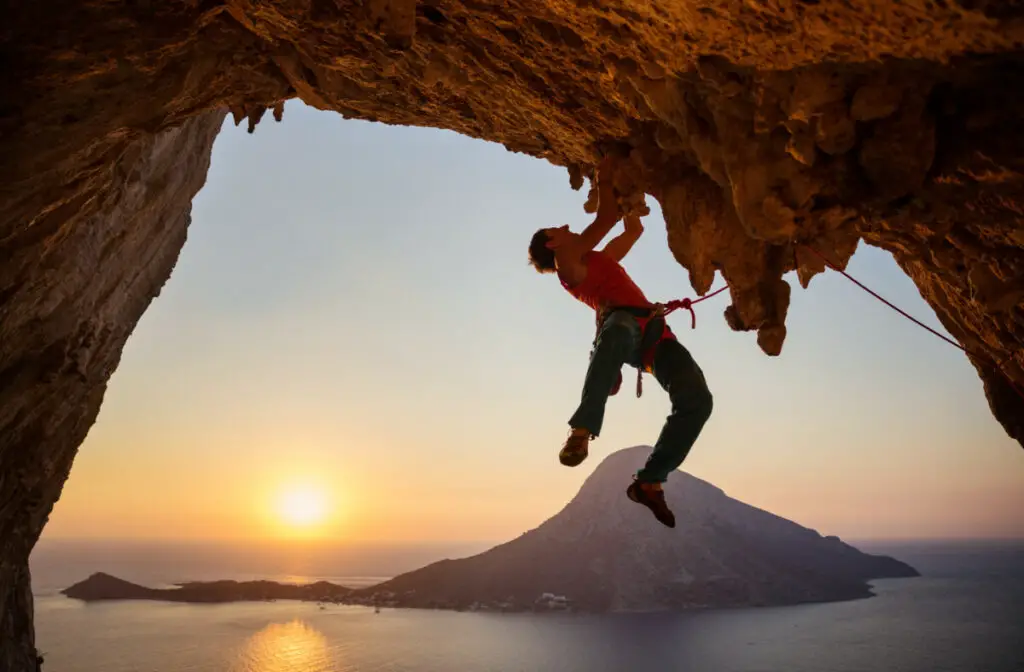
If your climbing equipment gets wet, it can be a hassle to dry it out again. Do you really have to go through the process of drying your rope, or is it safe to use it anyway?
A wet climbing rope is not safe to use. Wet ropes lose much of their elastic properties, have a decreased amount of strength, and are much slicker and more difficult for a belay to hold onto. To dry a wet rope, let it air dry with as much exposed surface area as possible.
There are a few different dangers of climbing a wet rope that you should be aware of. You should also know the right method for drying a wet climbing rope and keeping your climbing ropes dry.
Dangers of a Wet Climbing Rope
A wet climbing rope may not seem like a big problem. After all, how is water going to prevent the rope from catching you if you fall? On the contrary, a wet climbing rope has a few inherent dangers to it, which make it a bad idea to use a wet climbing rope.
Climbing ropes aren’t super stretchy like bungee cords, but they do have elastic properties. If you fall, the rope will stretch to absorb the impact. This puts less force on the sheer strength of the rope. However, a wet rope is elongated. This reduces the elastic properties by around 30%.
If you use a wet rope when climbing, falling is going to have a much higher impact on the rope. The rope will not be as strong without its elastic properties. It won’t be able to handle as much force. The amount of impact that you will put on the rope when you fall will vary based on your weight and the distance you fall, so the rope won’t necessarily break. However, it is better to be safe and make sure that your rope can take as much impact as possible. Besides, the repeated impact can weaken the rope to the breaking point.
Another issue with wet ropes is that they are much slicker than normal ropes. This may not seem important because you’re not holding onto the rope. However, the belay device is holding onto the rope. The device won’t be able to hold onto a slick rope as easily, and it may end up slipping, sending you plummeting to the ground. If the rope is frozen in places, it will make it harder for the rope to pass through the belay. Unwanted slack can build up, and you might end up falling farther, putting more impact on the rope and increasing the risk of serious injury.
Don’t use a wet rope when rock climbing. You might end up fine, but you shouldn’t take that risk. Make sure that all your equipment is in proper working condition, and even water can keep the rope from working properly. Drying your rope before climbing will likely save your life.
How to Dry a Wet Climbing Rope

So, now you have to dry your climbing rope before you use it, which is easier said than done. Climbing ropes need to be dried the right way so that they aren’t damaged, and it can often take a long time.
When drying climbing rope, don’t expose it to a heat source, including the sun. Heat can destroy the fibers of the rope over time, so drying it with heat over a long period will damage it. Dry to rope somewhere cool and in the shade.
Make sure that the place you put the rope has a lot of airflow. The rope will not dry as quickly if there is no good circulation in the room. Try opening a window or turning on a fan. It will dry much more quickly and efficiently.
Make sure to expose as much of the rope’s surface area as possible. If the rope is coiled up, the water will not evaporate as quickly in those areas. Try not to set the rope on top of itself. Whenever possible, stretch the rope out completely; this will help it dry the fastest.
Even if you aren’t going to use the climbing rope anytime soon after it gets wet, you should still dry it out as soon as you can. Mildew can damage climbing rope, so you need to dry out the rope before putting it into its bag.
How to Keep Your Climbing Ropes Dry
It’s best to keep your climbing rope dry as much as you possibly can. This way you don’t have to dry it out or risk it getting damaged by mildew.
Try to store your rope in a bag or wrapped in a tarp. This will protect it from water, as well as snow, dirt, and other debris. Carry the rope around like this too in case there is a rainstorm.
Store the rope somewhere where it won’t risk getting wet. Keep it inside, somewhere cool and dry. Make sure that you aren’t storing it in the sun or anywhere else hot either.
Climbing in the rain has many dangers, but one of the reasons why you should climb in the rain is because your rope will get wet. If it starts to rain, get to the ground, pack up your rope, and get out of there.
If you’re really worried about your rope getting wet, you can use a dry-treated rope. These are ropes that are coated and treated so that the fibers don’t absorb water as easily as normal climbing ropes. They are still dangerous to use when wet, and over time they will being to absorb water. However, they will dry more quickly and not get as damaged.
To reiterate, don’t use a wet climbing rope! Keep your climbing ropes dry or dry them out properly before using them. Don’t dry them using the sun or heat, and don’t store them when they are wet. Make sure to take good care of your climbing rope; it is the only thing keeping you from falling to your death while you are rock climbing.

